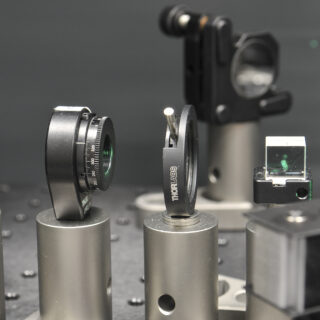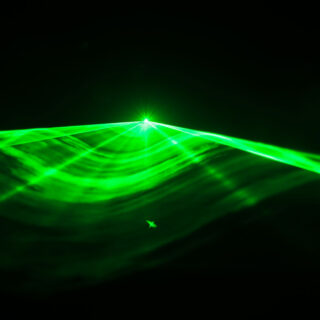The magnetic field is an invisible field that describes the action of a magnetic element on its environment. There are several ways of defining it, and the following one is the one that we chose according to the context in which we use it.
Observed since antiquity, the physical phenomena involved in magnetism were only understood in the 19th and 20th centuries.
Many atoms have a weak magnetic moment (an intrinsic property of matter), which causes a magnetic field in their vicinity. In condensed matter (solid state), it is the accumulation of these atoms (i.e., their magnetic moments) that creates an intense magnetic field around the material: a magnet.
In parallel to this phenomenon, an electric charge or a moving charged particle (e.g., an electric current), also generates a magnetic field in its immediate surroundings. Thus, any electric current flowing through a conductive material causes a magnetic field around this material. This phenomenon is also completely reversible, and the application of a variable magnetic field to a conductive material generates an electric current within that material.
The magnetic field and the Earth
The magnetic field is usually represented by field lines, which run from the north magnetic pole to the south magnetic pole.
Thus, the earth’s core, which is 90% liquid iron, generates a magnetic field that encompasses our planet by the dynamo effect. The red needle of a compass (which is itself a simple magnet) indicates the north magnetic pole.
Magnetometry
Magnetometry is the general principle of measuring the magnetic field of any system in order to study or characterise certain properties of that system. Among other things, it may involve trying to find out with a high degree of accuracy the magnetic field itself, but also many other characteristics of the system.
Some examples :
- The measurement of the Earth’s magnetic field, in an extremely precise manner for several reasons: to create a map of the magnetic field that can be used in navigation as a reference, or to try to understand the exact movement of the Earth’s core.
- Measuring the magnetic field emitted by the active areas of the brain in order to locate these areas and thus better understand the functioning of our brain; this is called magnetoencephalography.
- The measurement of the magnetic field on electronic circuits in order to check that the electric current is flowing in the expected way, and thus to detect potential faults.
Depending on the application, there are many different types of magnetic field sensors (magnetometers), each with different requirements. The two most important are usually the sensitivity of the sensor (its ability to measure very small changes in magnetic fields) and its size, but many other characteristics can be crucial.























